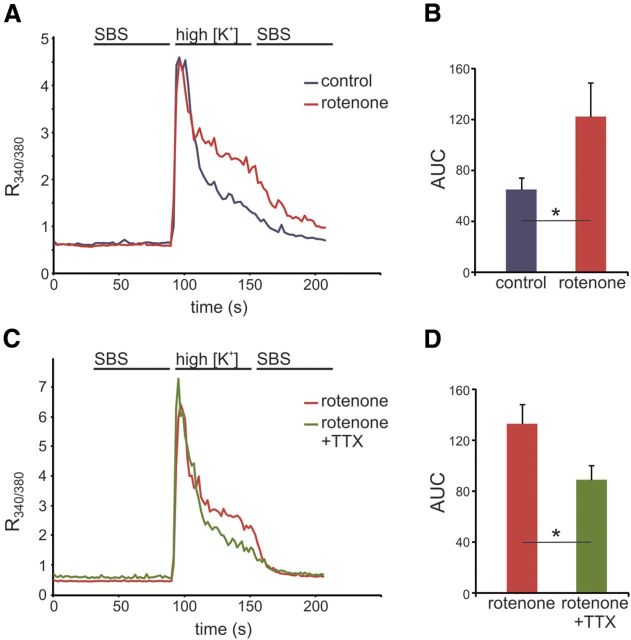Figure 8.
Sodium channel blockade restores rotenone-induced inhibition of neurite [Ca2+]i recovery to depolarization. A, Neurites in peripheral compartments of Campenot chambers treated with rotenone for 20 h exhibit reduced capacity to clear increased levels of intracellular Ca2+ after high [K+]-induced membrane depolarization compared with control neurites. The initial (10–15 s) recovery from high [Ca2+]i is similar between control and rotenone-treated neurites, but Ca2+ clearance is substantially slower after this initial period in rotenone-treated versus control neurites. Curves represent means of n = 23 control and n = 23 rotenone-treated neurites. B, Quantification of [Ca2+]i recovery after depolarization demonstrates that the AUC for rotenone-treated neurites is ∼2-fold that of control neurites (*p < 0.05; n = 23 control and 23 rotenone-treated neurites). C, Neurites treated with TTX and rotenone exhibit increased capacity to clear intracellular Ca2+ compared with neurites treated with rotenone only. The initial (10–15 s) recovery from high [Ca2+]i is similar between rotenone and rotenone with TTX, but Ca2+ sequestering is enhanced after this initial period with TTX treatment. Curves represent means of n = 13 rotenone and n = 17 rotenone + TTX-treated neurites. D, Quantification of [Ca2+]i recovery after depolarization demonstrates that the AUC for neurites with TTX treatment is approximately one-half of that for rotenone only (*p < 0.05; n = 13 rotenone and n = 17 rotenone + TTX-treated neurites). Data are presented as mean ± SEM.

